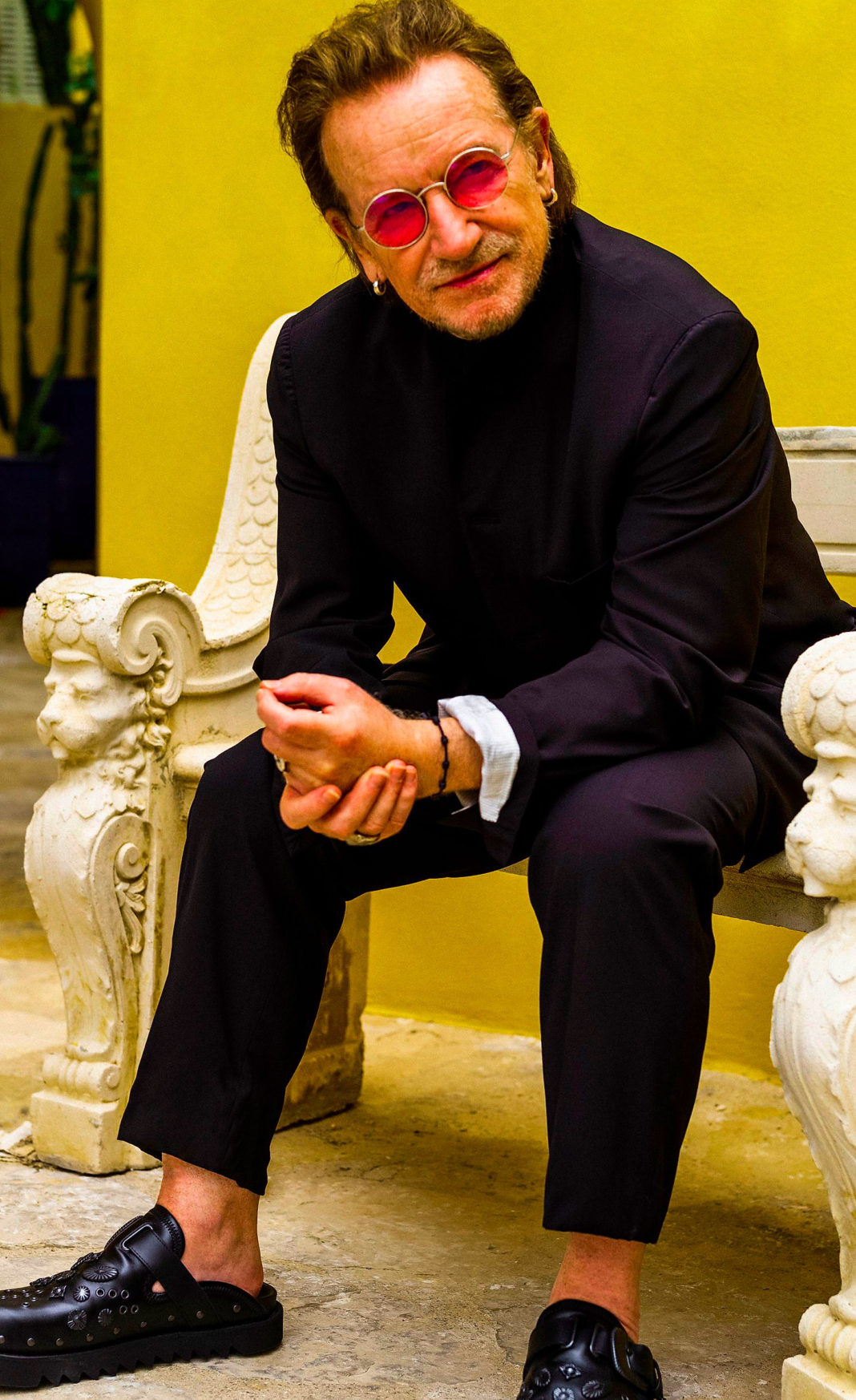A New Chapter for Bono
During a recent visit to his Southern France estate, Bono shared personal reflections and insights into his life and career.
Near the conclusion of our initial afternoon together, Bono mentioned the renowned Irish poet W. B. Yeats, whose grave is located nearby. It was early April, and the U2 lead singer was escorting me towards my vehicle. The Mediterranean Sea stretched out behind us, an expansive blue vista.
His expansive property included several houses and swimming pools, offering considerable seclusion, despite its proximity to Monaco and Cannes. Bono isn’t the first Irish individual to exchange the damp climate of his homeland for the sunny Côte d’Azur, but he may be doing it more successfully.
Bono co-owns the property with his bandmate, the Edge. In the early 1990s, while vacationing with the rest of the band, they noticed the property and stopped to examine it. However, Larry Mullen and Adam Clayton, the drummer and bassist, declined to leave the car, believing it would involve excessive upkeep. The vocalist and guitarist, however, were unable to resist the purchase.
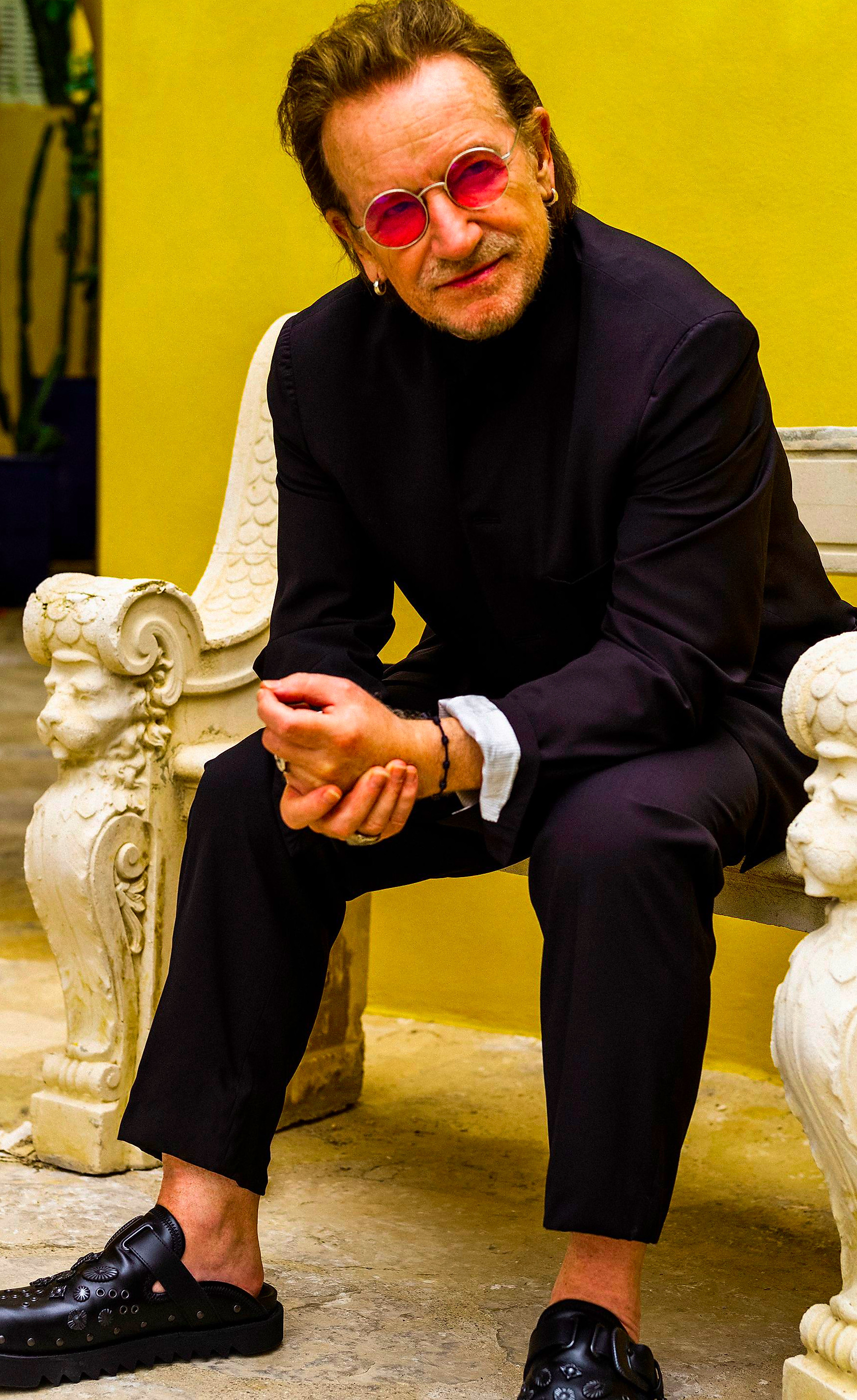
The clothing worn in the image is: Jacket and trousers by Umit Benan; T-shirt by Dries Van Noten; sandals by Toga Virilis; sunglasses and jewelry, Bono’s own.
The property has indeed required considerable effort. Additional buildings have been constructed to accommodate their growing families over time. On that particular day, one structure was undergoing renovations, and one pool was empty, part of the summer preparations. This retreat, however, has provided significant benefits to Bono and his bandmates.
A few days later, Bono stated that the property had been instrumental in revitalizing their musical careers. The living area was elegant yet informal, featuring comfortable seating, extensive windows with ocean views, a piano, and a large fireplace. Despite the luxurious surroundings, his attire remained characteristically rock star—black jeans, a black V-neck shirt, and an army-green jacket.
The period leading up to the purchase of the summer home had been exhilarating but demanding. Bono described the process of becoming a globally renowned band as akin to a laborious uphill struggle. The band transformed into serious musical artists; however, they had yet to master the art of enjoyment.
This respite may have indeed contributed to their musical success, resulting in highly acclaimed albums such as “All That You Can’t Leave Behind” and “How to Dismantle an Atomic Bomb.” (Readers can determine their own opinions on “Pop,” a more polarizing album in their discography.) However, Bono also discovered something else in Southern France: a counterbalance to a driven aspect of his personality.
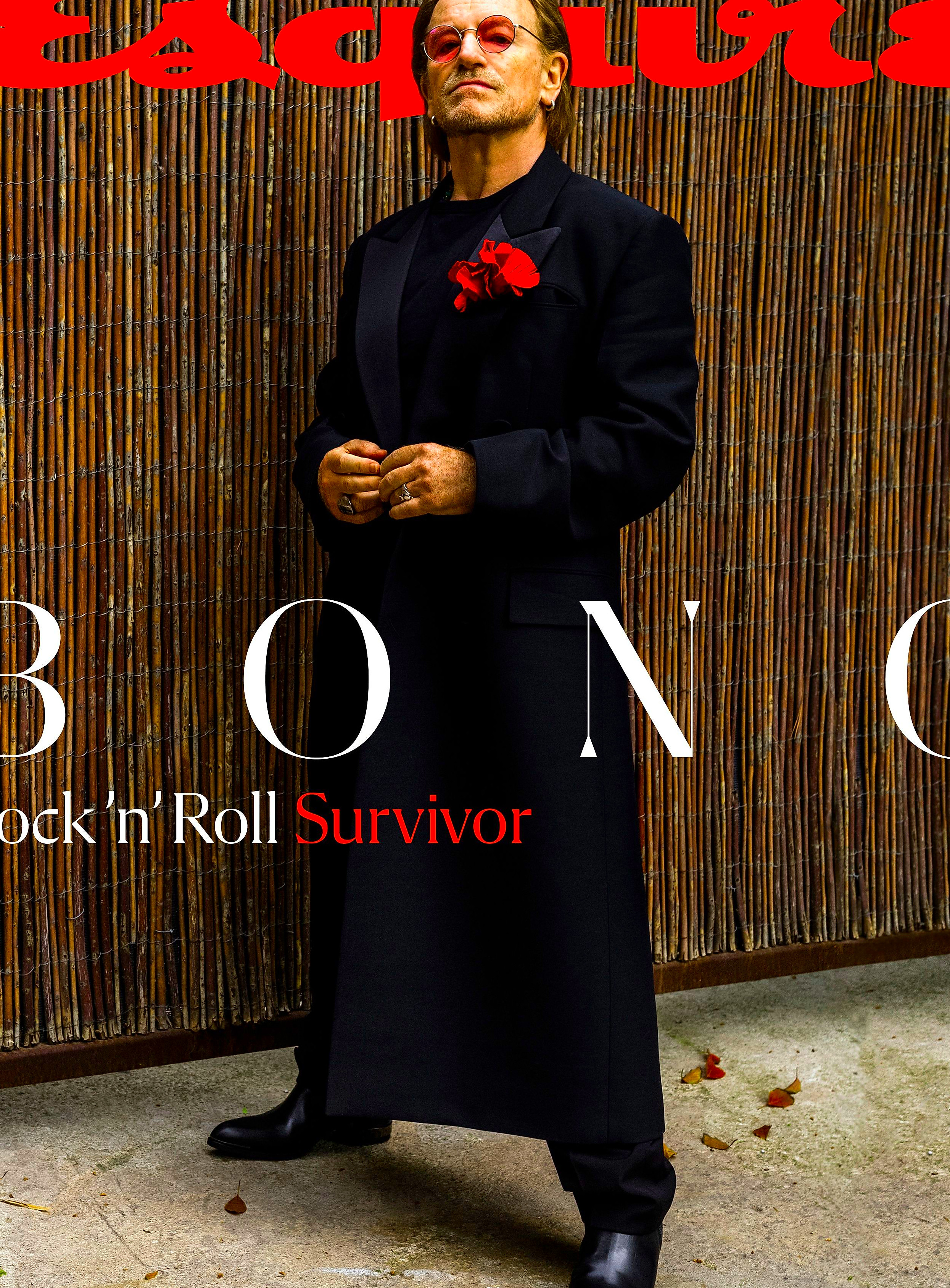
This aspect of his personality had driven his pursuit of prominent music venues, awards, and creative innovations for over four decades. This same force had propelled him to co-found organizations dedicated to fighting poverty in Africa, AIDS, malaria, tuberculosis, and to spearhead AIDS relief campaigns.
Bono acknowledged that complete anonymity was impossible, but noted the French are very respectful, creating a sense of relative privacy.
After thirteen years of intense career focus, Bono learned to relax and embrace a more balanced life. This included enjoying leisurely meals, late nights, quality family time, and social gatherings.
He admitted to perhaps overdoing it during his thirties, questioning the balance between self-love and self-indulgence. Nonetheless, he expressed gratitude for the experience.
Although his family visits primarily during the summer due to their busy schedules, Bono cherishes those times of togetherness. He embraces the lively atmosphere that comes from numerous visitors. Bono and his wife, Ali, have four children, with ages ranging from 23 to 35. The Edge has five, and some of them have started having children of their own, and they call him simply “Bono”.
He spends a significant amount of time alone at the property, working diligently, while at times enjoying a more relaxed pace.
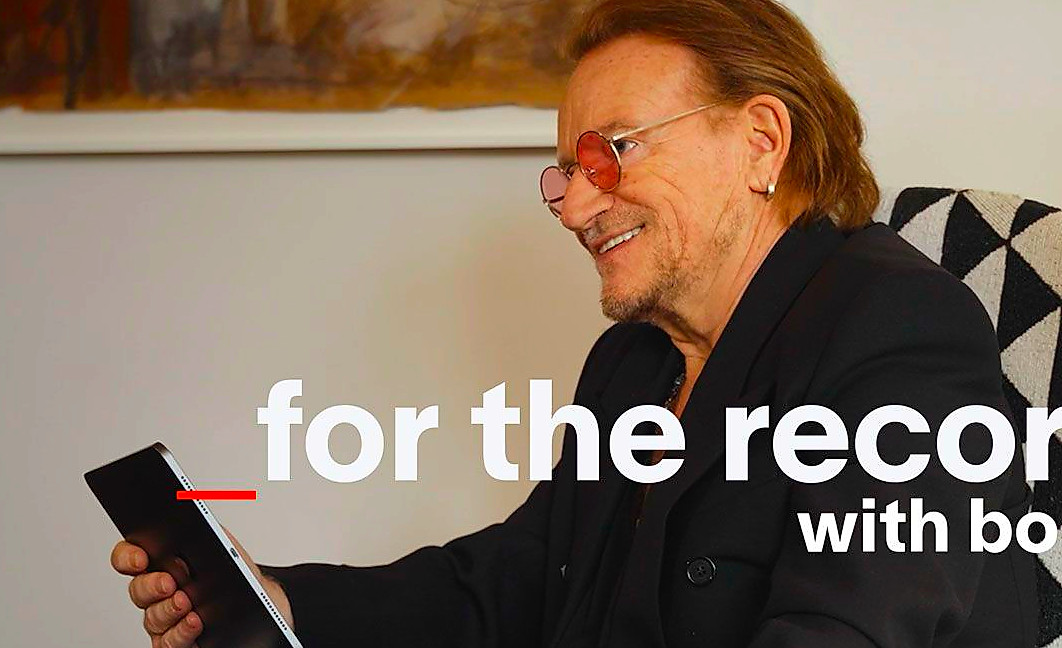
This interview coincides with the release of his new film, “Bono: Stories of Surrender.” Adapted from his memoir, and shot during his one-man stage show, the film offers a personal and vulnerable perspective on his life.
The film premiered at the Cannes Film Festival before its release on Apple TV+ and Vision Pro. Critics may see this work as a mere nostalgic money-grab, but this would be a misjudgment of the man and his current stage of life.
The past years have been transformative for Bono, who turned sixty-five this spring. He recovered from a serious health crisis and gained a more balanced perspective on life’s pleasures. He confronted past traumas, and reassessed his role in his humanitarian endeavors. His journey has left him changed for the better.
However, Bono’s introspective period hasn’t led to inactivity. His relentless drive remains, and he feels revitalized. U2 is currently in the studio working on new material, possibly their first album of new music in nearly a decade, and his enthusiasm is evident. Bono clearly has more stories to share, and he feels the world needs to hear them.
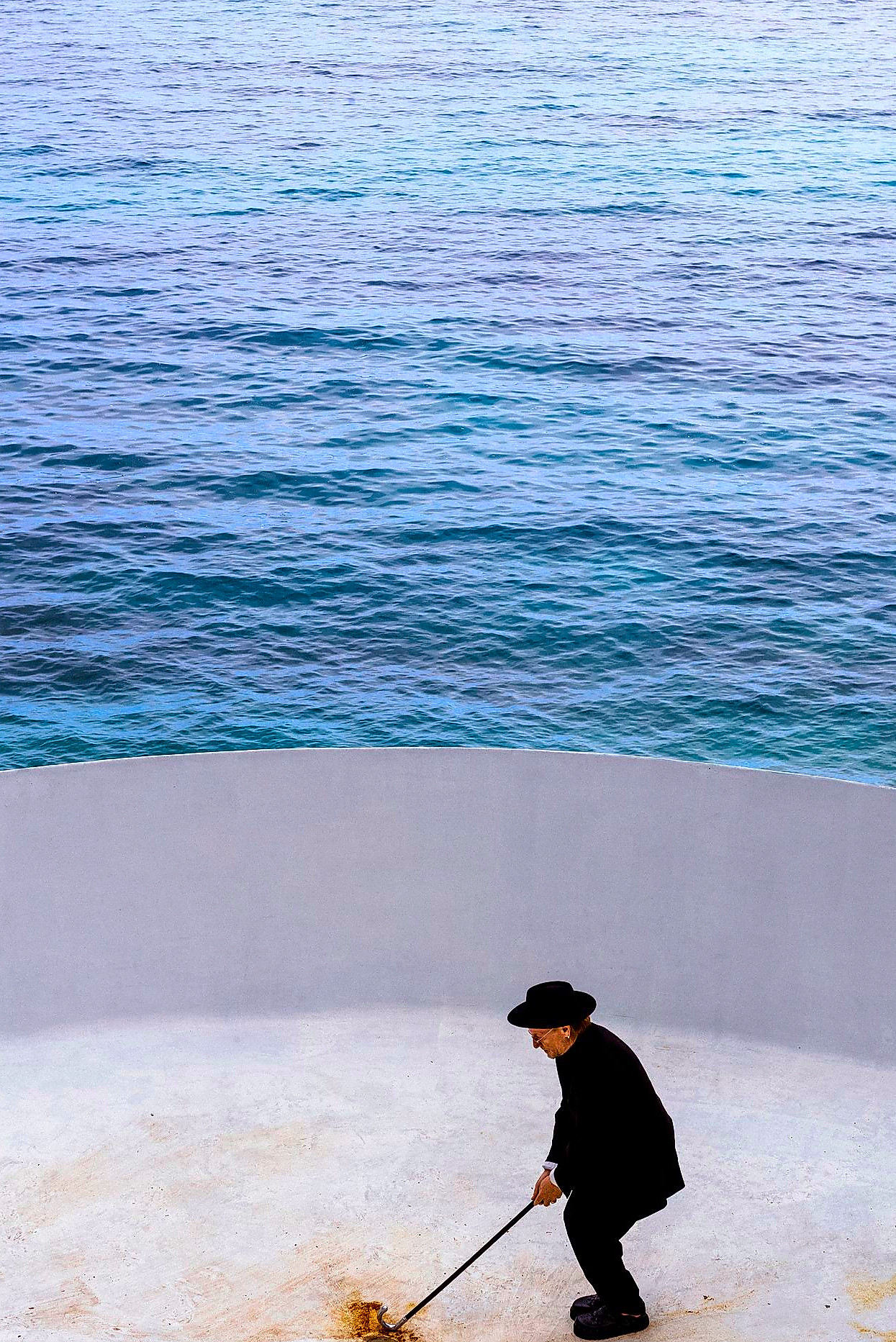
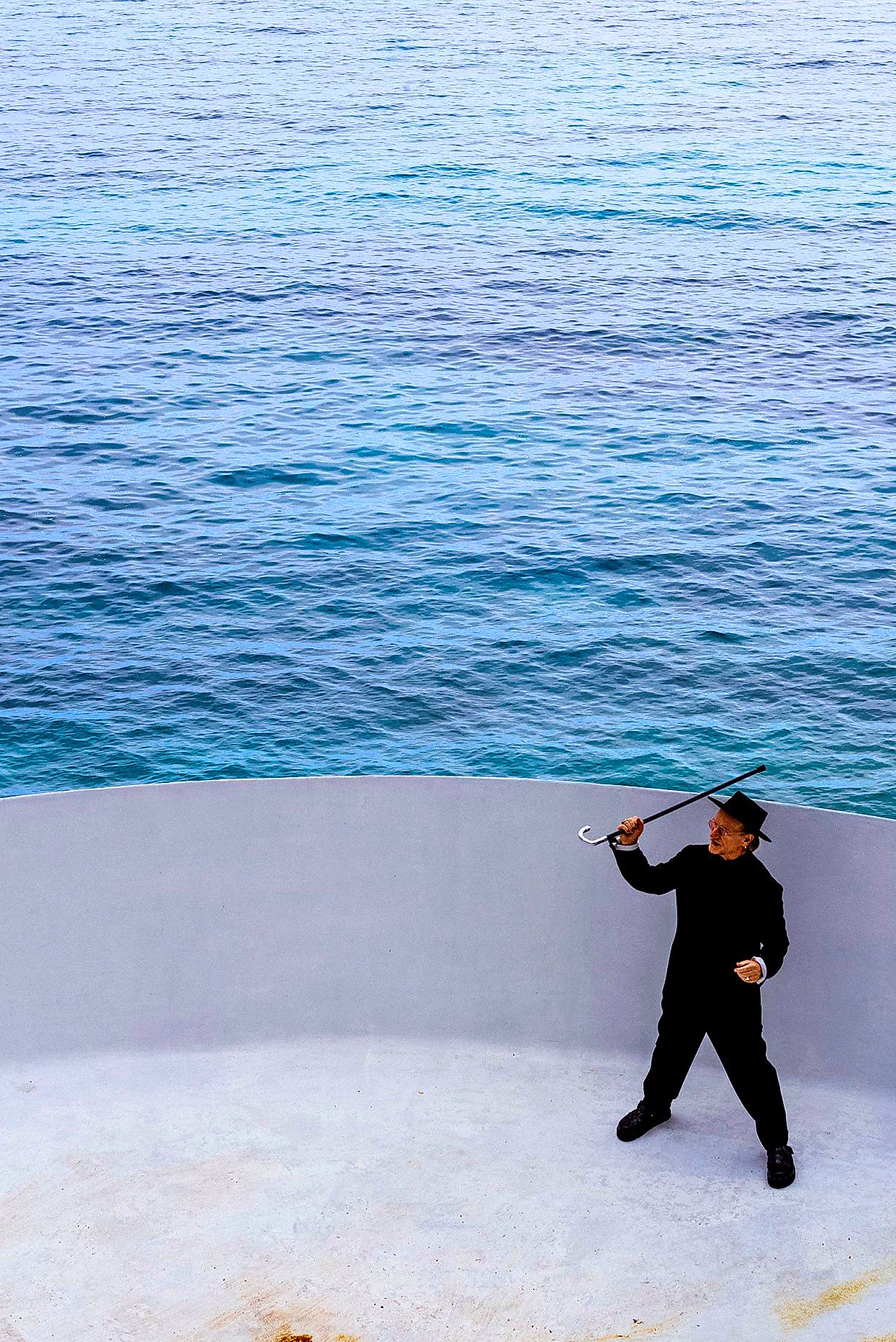
The clothing worn in the image is: Coat, jacket, and trousers by Umit Benan; T-Shirt by Dries Van Noten; hat by Lock & Co.; sandals by Toga Virilis; cane by Ottavio Recalcati; sunglasses and jewelry, Bono’s own.
He didn’t initially intend for his one-man show to become a multimedia project. Apple Studios approached him with a filming proposal after the show’s dates were already set. This collaboration expanded to include a film version and an immersive version for Vision Pro with Bono’s own illustrations.
Director Andrew Dominik joined the project, resulting in an intense production schedule. As a member of U2, where each member has equal input, Bono has spent his life navigating creative collaborations. Dominik challenged Bono in unexpected ways, prompting him to confront past traumas.
Their only disagreement involved Dominik’s initial intention to create a documentary about the show. Bono’s bandmate, the Edge, helped him articulate why this approach wasn’t suitable.
Bono is many things: a captivating performer, a dedicated activist, and a compelling figure. Dominik insisted on authenticity, pushing Bono beyond mere performance. During rehearsals, Bono vividly recreated his father’s final moments, embodying both himself and his father. Dominik’s critique, however, proved instrumental.
Upon asking about his feelings regarding the film’s release, Bono expressed a mix of anxiety and weariness with his own role as the central figure.
U2’s origin story is legendary. In 1976, a flyer placed on the bulletin board of Mount Temple school, sought musicians to form a band. Paul Hewson, David Evans, Adam Clayton, and Larry Mullen Jr. answered the call. Mullen was a skilled drummer, Evans (the Edge) demonstrated guitar talent, Clayton possessed an edgy attitude, and Hewson yearned for connection.
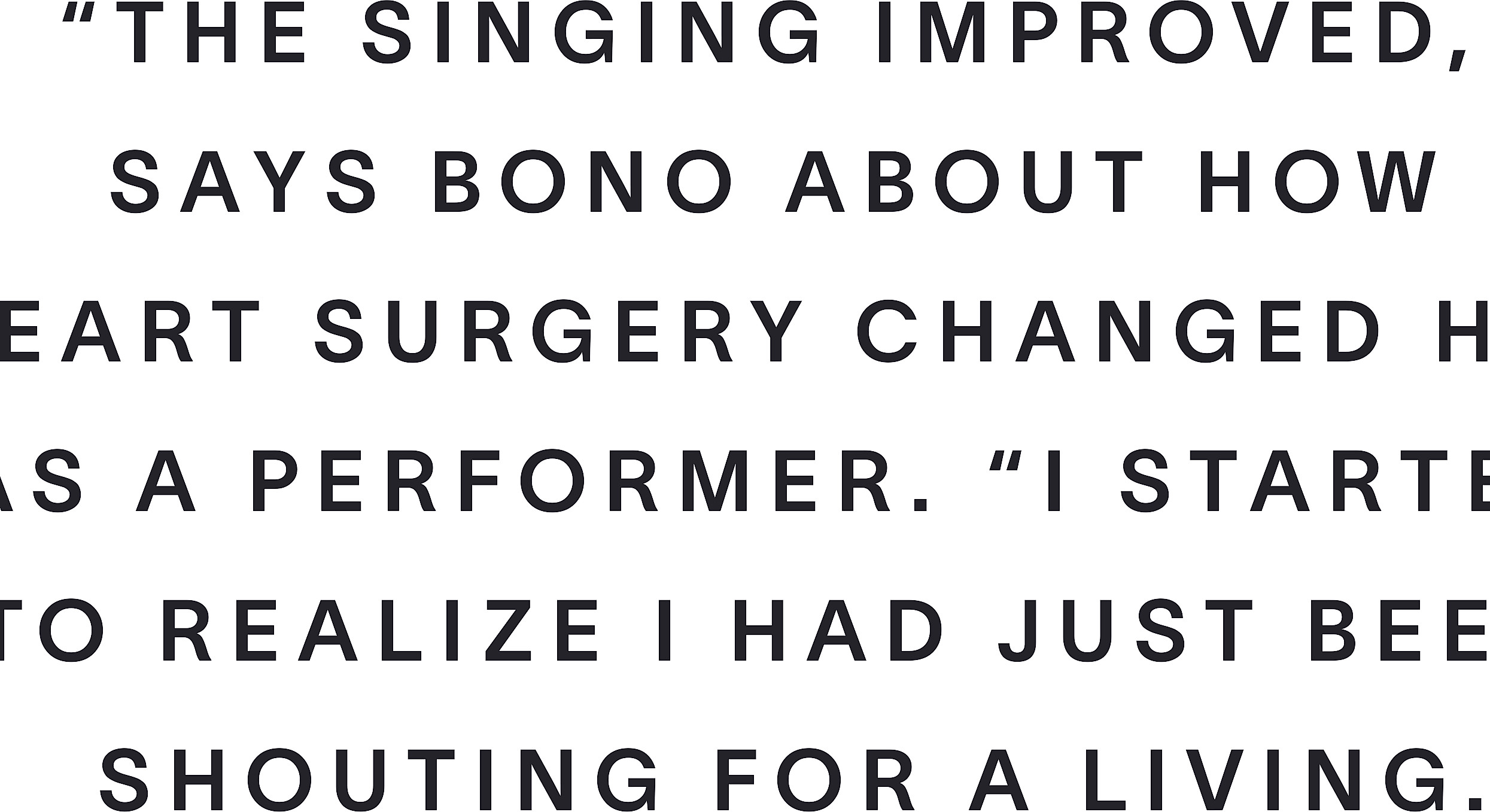
Hewson, who later adopted the name Bono, was coping with the loss of his mother two years prior. His childhood friend, Gavin Friday, described him as profoundly alone, highlighting the strong bonds of friendship that formed during that time. His father had embraced a more social lifestyle, his older brother was living independently, and Bono was left with a sense of isolation.
Bono’s charm and resourcefulness helped him navigate the subsequent years. Friday shared a story of Bono’s childhood habit of visiting friends’ houses for fish and chips on Fridays, illustrating his capacity for connection and social navigation. Despite the lighthearted nature of this anecdote, it emphasizes Bono’s resilience.
Bono’s relationship with his father, Bob, was complex, marked by a lack of attention and critical remarks. This fueled his ambition to achieve great success, something that even his father couldn’t ignore.
This ambition has yielded significant success: millions of records sold, numerous Grammys, homes worldwide. But it has also fallen short in other areas. Friday recalls a conversation with Bob Hewson at a U2 concert, showcasing the unresolved tension between father and son.
Following Bob’s death in 2001, Bono grappled with unresolved anger. A conversation with his wife provided a crucial insight, suggesting that some of Bono’s anger stemmed from blaming his father for his mother’s death. This understanding prompted a shift in perspective.
A year later, Bono sought forgiveness from his father, realizing the conversation needed to shift. The healing process began. Writing his memoir assisted with this process, and his stage show became the most therapeutic experience, allowing him to confront his emotions through humor.
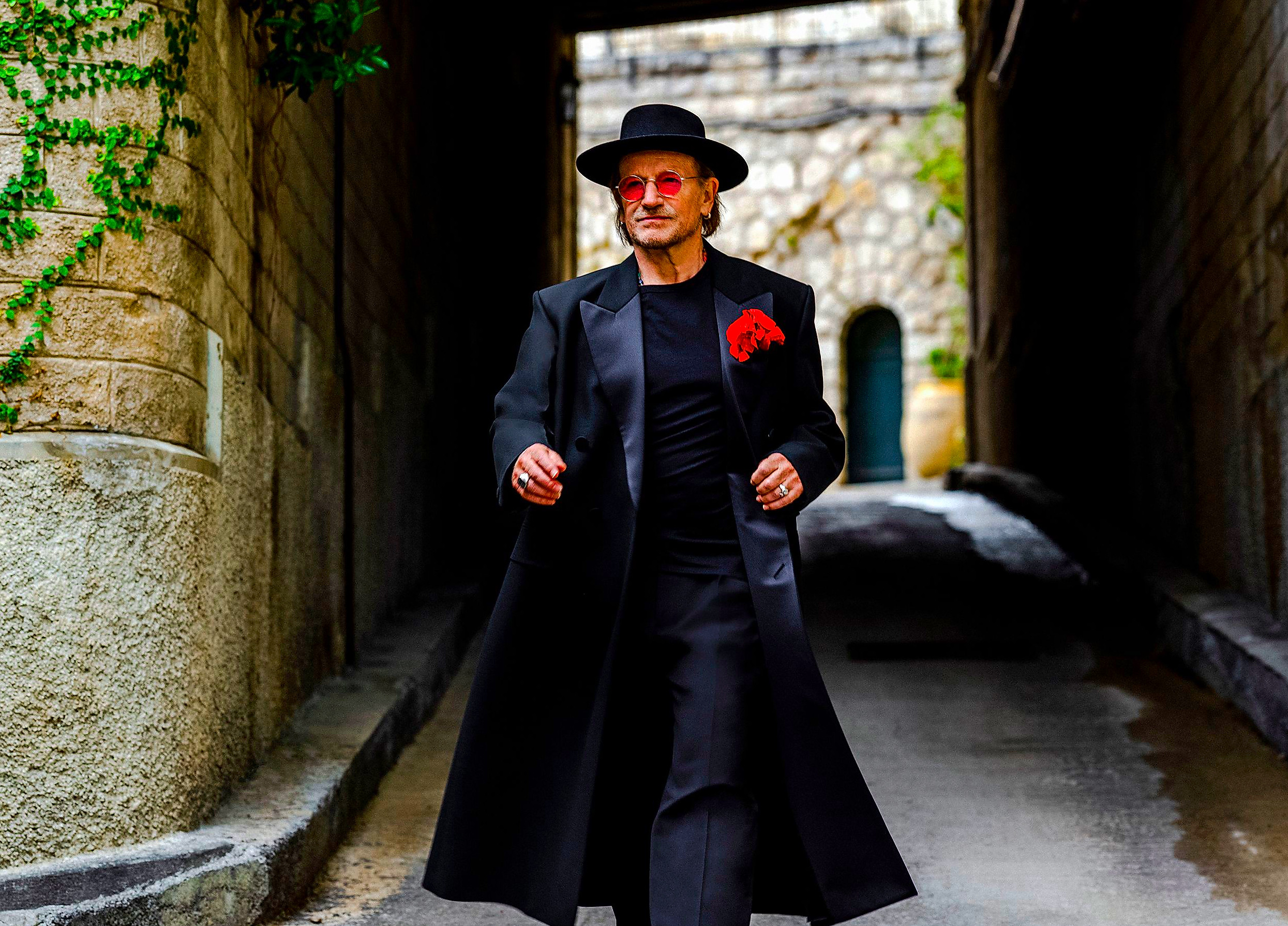
The clothing worn in the image is: Coat, trousers, and pin by Ferragamo; T-shirt by Dries Van Noten; hat by Lock & Co.; sunglasses and jewelry, Bono’s own.
Bono also reconsidered his relentless drive to improve the world, realizing his father’s influence on his social justice values. This newfound understanding fostered a sense of appreciation for his father and a profound sense of loss.
Bono’s public image is complex and polarizing. He acknowledges this, recognizing that he’s been both loved and loathed. The provocative nature of U2’s music, particularly their third album, “War,” and the anthem “Sunday Bloody Sunday,” has contributed to this multifaceted reception. This song, about the 1972 shootings in Derry, became a defining moment in their career and their social activism.
U2’s early work reflected a personal religious struggle. Their involvement with a fundamentalist church led them to question the compatibility of their faith and their rock and roll lifestyle. This struggle profoundly shaped their approach to music and their social activism.
Their earnest commitment to their art, and their consistent integration of social and political messages in their music, has marked them as sincere but not always cool. This sincerity has been both a strength and a weakness, creating a complex dynamic between them and their fanbase.
Their relationship with Ireland has been particularly nuanced. Having grown up amidst conflict, their early music reflected a desire for peace. They advocated for nonviolent methods of protest and challenged international support for violent organizations. They have carried that baggage, both positive and negative, throughout their career.
Controversies, including tax avoidance accusations and the infamous iTunes album release, have added further layers to their image. Bono consistently emphasizes that nothing the band has done is illegal, but he takes full responsibility for their actions.
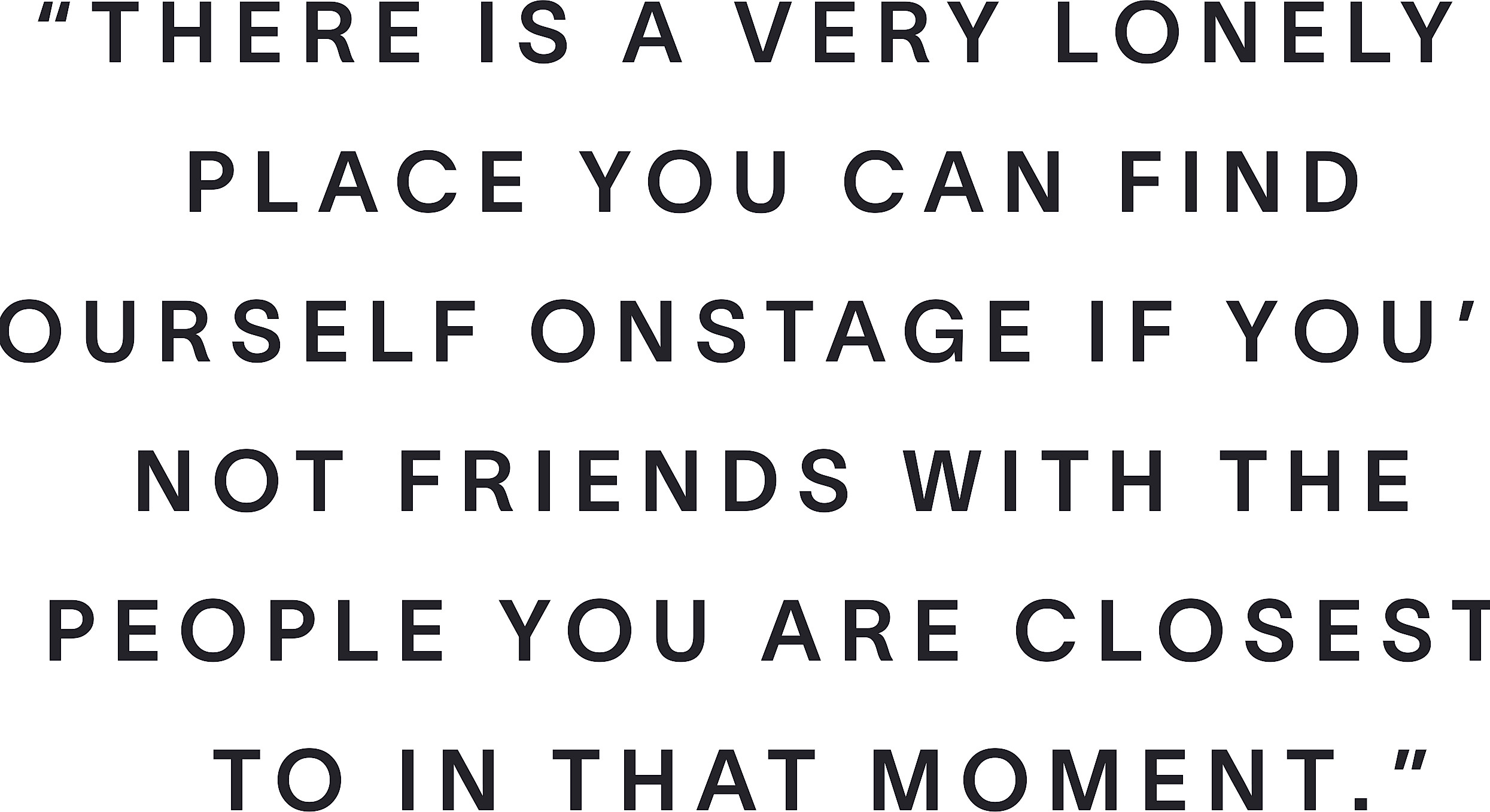
Jimmy Iovine, a long-time collaborator, emphasized Bono’s honesty and willingness to take responsibility for his actions. Iovine’s statement indicates the band’s complex relationship with their public image.
Bono embraces the duality of reactions to his band, recognizing that both love and dislike are part of their reality. He views criticism as a natural aspect of their career, comparing it to the challenges faced by performers who step into the public eye.
In 2016, Bono underwent open-heart surgery to address an aortic aneurysm. This life-threatening experience led to a period of reflection and changed his perspective on life. He faced challenges during his recovery, particularly loss of breath, a condition that altered his performance style.
Despite medical advice to cancel concerts, Bono chose to continue, adapting his performance style by standing still. The altered performances actually improved his singing, and it led him to recognize the difference between singing and shouting.
The experience has left him feeling rejuvenated. His health scare brought his priorities into sharp focus, prompting him to appreciate what he has. The subsequent Joshua Tree anniversary tour, his memoir, the album “Songs of Surrender,” and the Achtung Baby revival at the Sphere all built towards “Bono: Stories of Surrender.”
His family’s influence prompted him to slow down and incorporate more ordinary aspects of life, such as watching television. His family introduced him to various shows, from “Chef’s Table” to “Fleabag” and “The Kardashians”. He embraced a more relaxed pace, saying no more often, but admits that this continues to be a challenge for him.
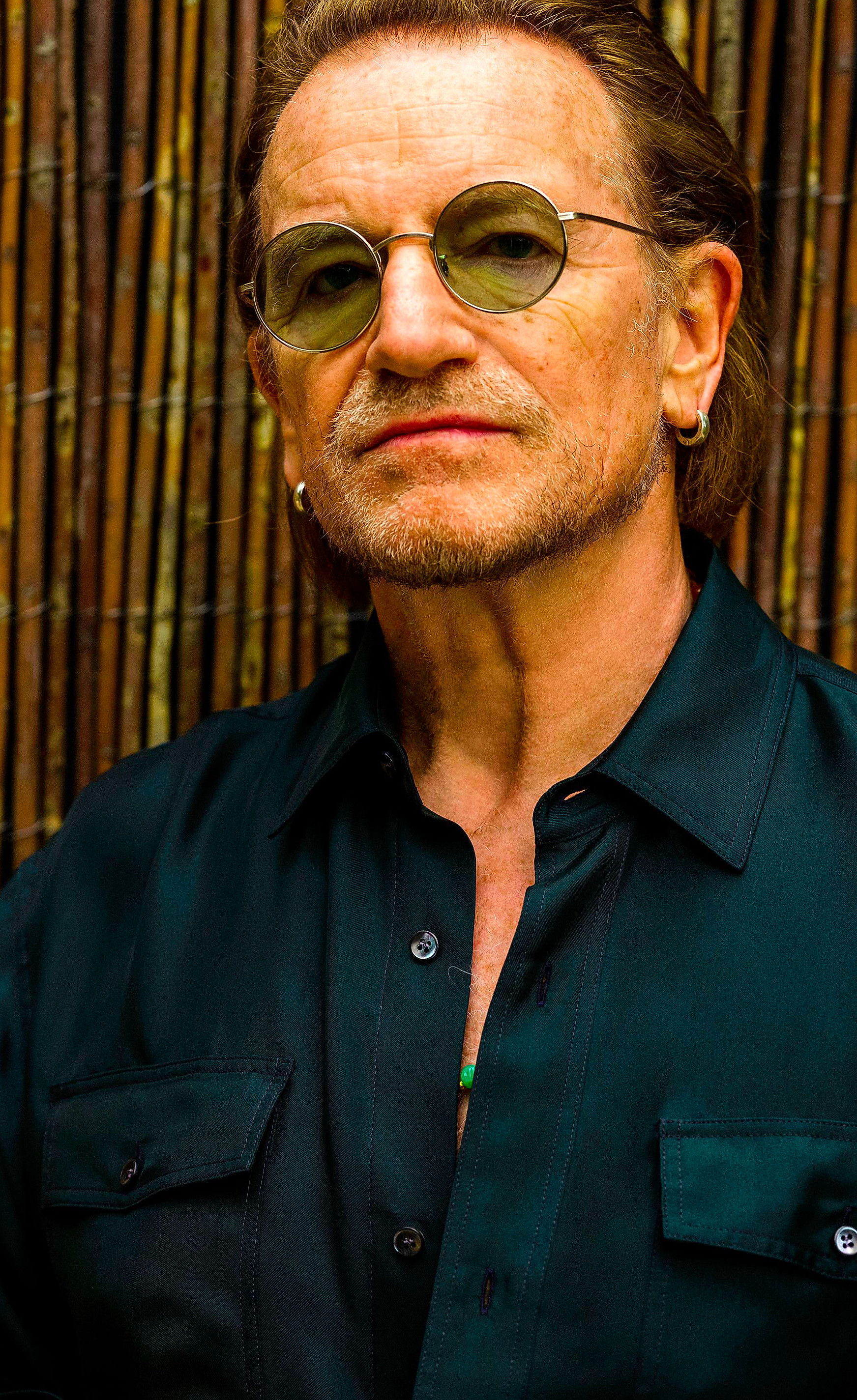
The clothing worn in the image is: Shirt by Giorgio Armani; sunglasses and jewelry, Bono’s own.
Bono’s involvement in (RED) and ONE, humanitarian organizations he co-founded, have been central to his life’s work. In late 2023, however, Bono stepped down from the board, making way for a new generation of activists. He explained that he was no longer the ideal person to lead these organizations.
Despite the difficulty of this decision, he recognized the necessity of promoting new leadership. He still misses the work. He acknowledged his own messianic complex, a trait common to many rock stars. He also expressed concern about the global political landscape and the setbacks experienced by the organizations he helped to create.
His experiences working with both Republican and Democratic administrations taught him valuable lessons. He’s proud of the AIDS relief efforts undertaken during the Bush administration, regardless of any criticism he received.
The Trump administration’s actions challenged his long-held belief that the moral universe inevitably bends toward justice. This experience reinforced his belief in the need for active engagement to achieve positive change.
Bono has witnessed both the positive and negative aspects of globalization. He is concerned about the rise of nationalism and its impact on international cooperation and humanitarian efforts. He remains particularly disturbed by the current political situation in the United States.
He identified several sources of hope: European unity, the belief that Americans will make the right choice if presented with facts, and the enduring power of freedom. He emphasized the importance of maintaining an anarchic spirit, a crucial element for change.
A conversation about Jeff Bridges’ interview, which emphasized the importance of harmony, resonated with Bono’s own worldview. The concept of harmony extended beyond music, to the spaces one occupies and the people one interacts with. Bono’s reflections on the importance of the environment also echoed these themes.
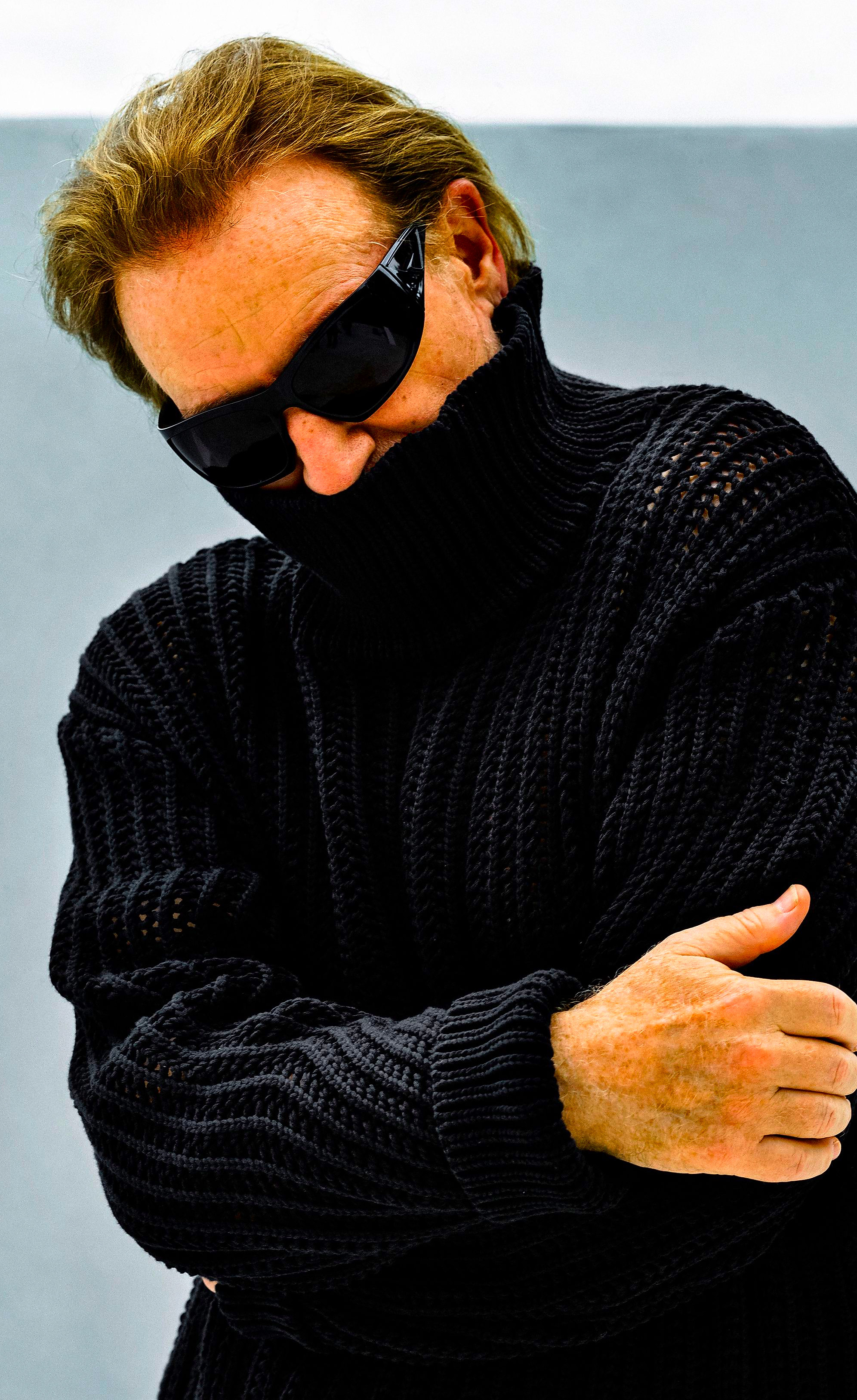
The clothing worn in the image is: Sweater by Dries Van Noten. Sunglasses, Bono’s own.
Bono’s reflections weave together personal experiences and broader societal issues. He’s able to seamlessly move between personal anecdotes and profound philosophical concepts. His self-awareness is evident in his ability to ground lofty discussions in relatable moments. He credits his wife for her wisdom and guidance.
He also referenced a wise observation by Chrissie Hynde, about living a long and fulfilling life. Bono’s perspective on raising his children is filled with pride and a blend of fondness and understanding. The family chose to raise their children in Dublin, enrolling them in a local school, rather than private schools elsewhere.
They value the normalcy and the lack of overt attention their fame brings. His children, he says, each have unique personalities, and he finds their lives enriched by the support and love of their family. Ali, his wife of forty-two years, is the center of their family dynamic. He credits her with providing a calming influence on his often-turbulent life.
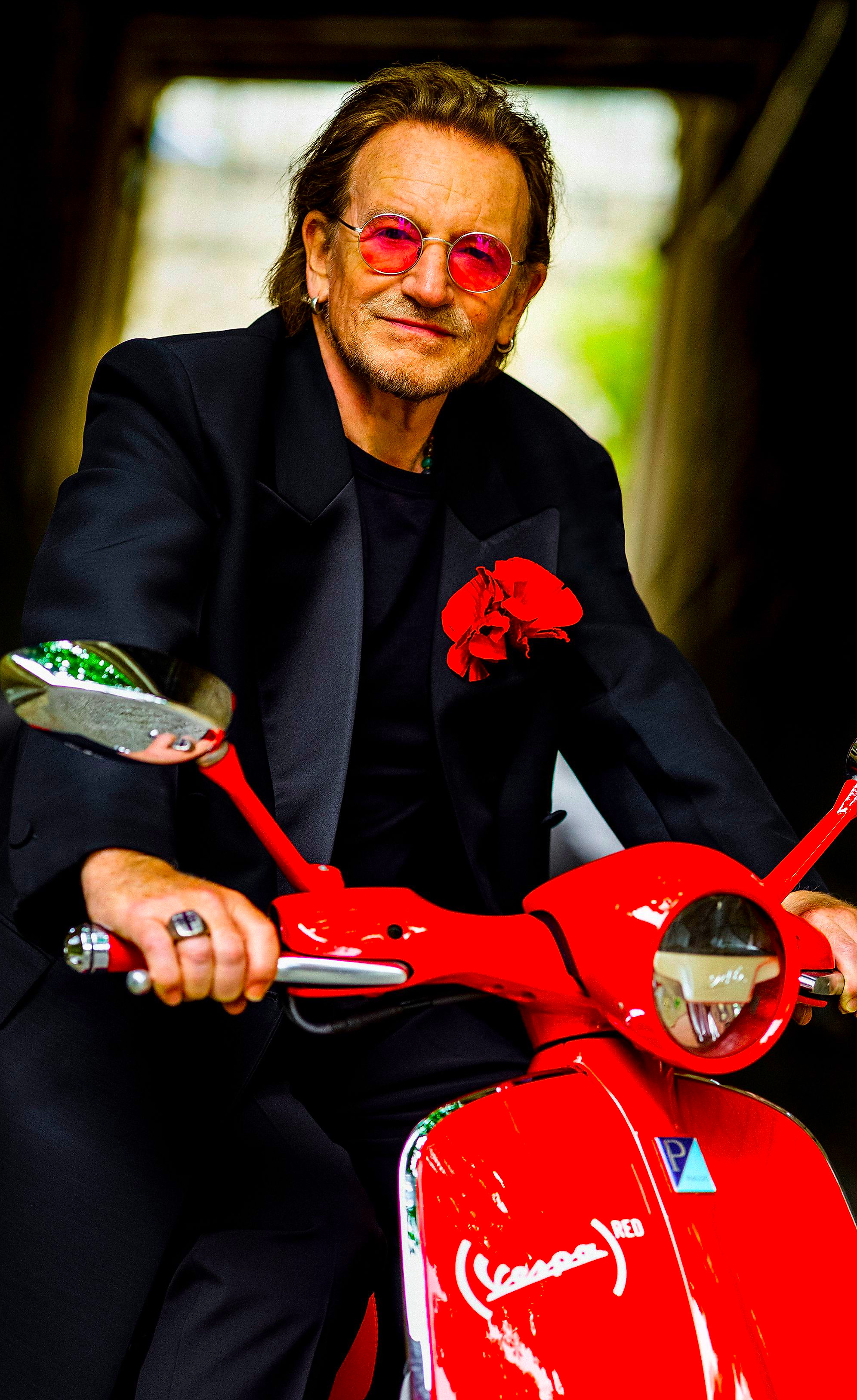
The clothing worn in the image is: Bono on Vespa: Coat, trousers, and pin by Ferragamo; T-shirt by Dries Van Noten; hat by Lock & Co.; sunglasses and jewelry, Bono’s own.
Bono attributes his ambition partly to a desire to prove his father wrong. In contrast, his children are thriving in a loving and privileged environment. This raises the question: Is his relentless drive an inherent part of his character?
Bono’s thoughtful pauses and self-reflection indicate his depth of character. He reflects on his own path, acknowledging both the positive and negative aspects of his personality. His children, he says, have a natural ability to both embrace and reject their privileged upbringing, showing a healthy balance.
Bono’s tireless drive appears to be an intrinsic part of who he is. He shares a new song, “Freedom Is a Feeling,” representing his current creative focus. U2 is currently recording new music, and he’s eager to return to performing live.
This idealistic vision is the same one that has both garnered praise and drawn criticism throughout U2’s career. The power of their live performances is evident, transcending the typical expectations of a rock show.
A new U2 album is on the horizon. He acknowledges past challenges within the band, such as Larry Mullen’s back pain and his own personal journey of reflection. Their renewed creative energy shows they still have something important to contribute.
Bono enthusiastically describes the band’s dynamic, highlighting the unique talents of each member. They’re working with producer Brian Eno again, and Bono’s current creative work draws inspiration from his earlier album, referencing themes of resilience and overcoming adversity.
Bono prioritizes live performance. He sees success in music as less tied to traditional album sales. His primary focus is on creating music that inspires people to make positive change in the world.
Bono reflects on the relationship between U2 and their audience, acknowledging their long-standing connection and the shared experiences that have shaped their music. U2’s enduring message continues to resonate.
The opening photo: Jacket by Dries Van Noten. Sunglasses and jewelry, Bono’s own. The cover image: Coat, trousers, and pin by Ferragamo; T-shirt by Dries Van Noten; sunglasses, shoes and jewelry, Bono’s own. Story by Madison Vain. Photographed by Anton Corbijn. Styled by Anastasia Barbieri. Grooming by Natalie Kinsella and Hannah Rankin. Production by Michaël Lacomblez at Louis2, Paris. Esquire Visual Director: James Morris. Esquire Design Director: Martin Hoops. Esquire Entertainment Director: Andrea Cuttler. Special Thanks to Sharon Blankson.
